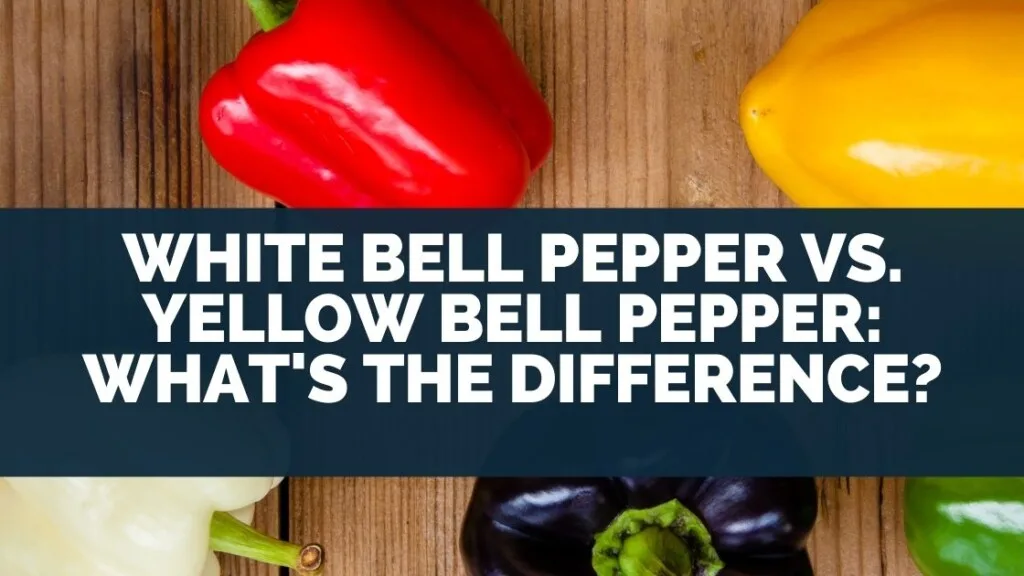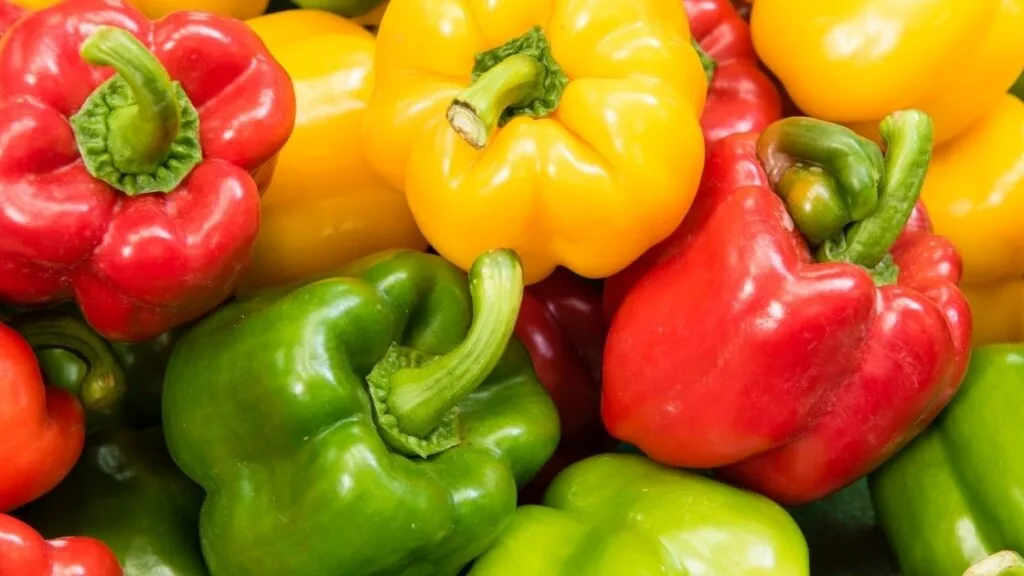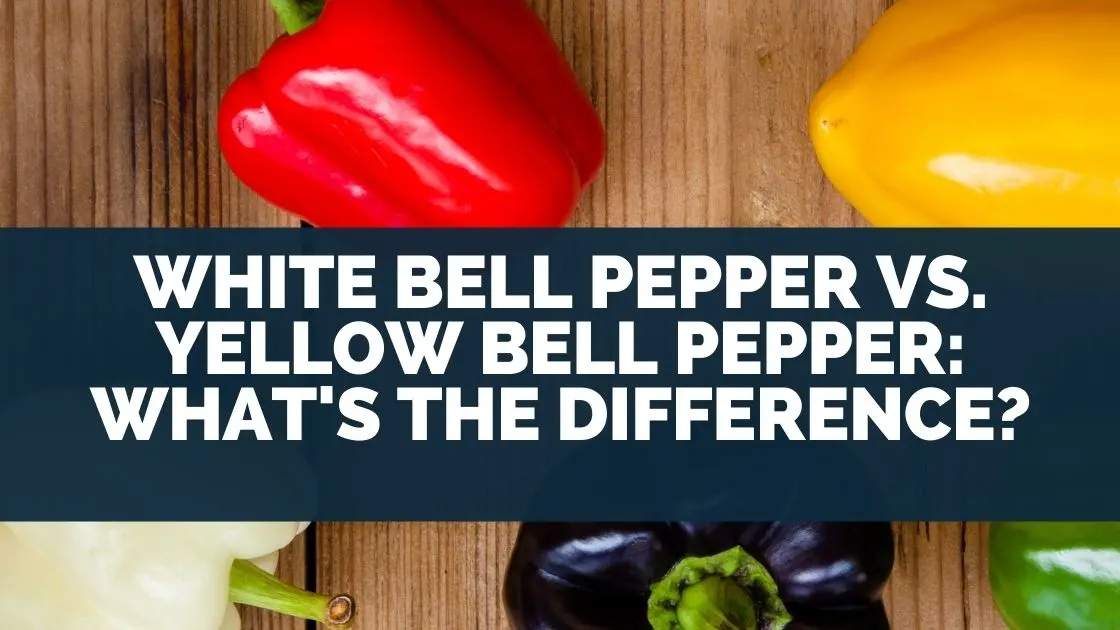
Bell peppers are a versatile and healthy vegetable that can be eaten raw, roasted, sautéed, pickled, or even made into a fermented pepper. They come in a variety of colors and shapes, and there may be slight differences in flavor and nutrients depending on the type you choose.
It’s important to know which bell pepper is best for your needs so you can make the most informed decision!
Table of Contents
What are bell peppers?

Capsicum annuum, the scientific name for bell peppers, is a genus in the same family as chili peppers. It is larger, rounder, crunchier, and gentler than its small, fiery brethren.
For all their Central and South American origins, bell peppers are now grown and distributed by China, which is also their primary source of supply. The finest time to find peppers from local growers is during the height of summer, from July through September.
What are the differences between white and yellow bell pepper?

There are many varieties of bell peppers, but the most popular are white and yellow. The color of your bell pepper is determined by the presence of carotenoids. And while they may look different, there is no difference in their taste or flavor.
White bell peppers tend to be sweeter than yellow bell peppers because they lack the natural sugars that yellow peppers have. They also have a higher water content than yellow peppers, but they’re still very flavorful.
Yellow bell peppers are more nutritious than white, containing three times as much vitamin C and twice as much fiber. They also contain “healthy fat” that can help with weight management and digestion.
So which one should you choose? White or yellow? It depends on what you want out of a slice of sweet pepper!
Nutritional Value of White Bell Peppers
White bell peppers are not only one of the most common types of bell peppers, but they are also the most nutritious. They are a good source of vitamin C, vitamin B6, and potassium. White bell peppers are also low in calories and provide your body with no fat or cholesterol.
The white color comes from its lack of carotenoids, which means you can expect it to be lower in nutrients like beta-carotene and lycopene. That’s why it’s recommended for raw cooking rather than roasted or high-heat frying.
Nutritional Value of Yellow Bell Pepper
The yellow bell pepper is often overlooked when it comes to nutritional value. In fact, after the red and green bell peppers, it has the lowest amount of vitamin K as well as a slightly lower amount of vitamin C.
However, it still has a good amount of fiber and vitamin B6. The yellow bell pepper’s flavor may be a little milder than other varieties, so it may be a better option for those who don’t like a lot of heat or spice in their food.
Health Benefits of White Bell Pepper
White bell peppers have a creamy, mild flavor and are typically somewhat sweeter than red, green, or yellow bell peppers. They’re also a little more watery and not as dense as some of the other varieties.
The white pepper is a good option if you prefer lighter, less spicy dishes. It can be eaten raw in salads or on sandwiches to add a sweet crunch or used to make flavorful dips like guacamole or pico de gallo together with leafy green vegetables.
Some believe that the white variety may provide more fiber and fewer calories than other varieties because it’s drier and not as dense. But there really isn’t enough evidence to conclusively say this is true for all types of white bell peppers.
Regardless, eating a healthy vegetable like a bell pepper of any color is a smart choice!
Health Benefits of Yellow Bell Pepper
You may not know this, but yellow bell peppers contain a pigment called beta-carotene. Beta-carotene is converted by the body into vitamin A, which helps with eye health and immune function. In addition, it has been shown to help with various types of cancer and heart disease.
If you’re trying to get more fruits and vegetables in your diet, this might be a good way to go! Yellow bell peppers are a good source of potassium and vitamin C. They also have a high fiber content which can help with digestion and weight loss.
Antioxidants in White Bell Pepper
White bell peppers are a good source of vitamin C, which is an antioxidant. They also contain lycopene, another antioxidant, which may be higher in white bell peppers than in green or red bell peppers because of their thinner skin.
Antioxidants can protect your cells from damage caused by free radicals that are released through exposure to the sun and other toxins. They also promote heart health and prevent certain cancers.
Many people don’t think about including antioxidants in their diet, but it’s important to include them if you want to take care of your body! The antioxidants found in white bell peppers can help you achieve this goal.
Antioxidants in Yellow Bell Pepper
In general, peppers are a good source of antioxidants. This includes bell peppers. In fact, yellow bell peppers have been found to be high in vitamin C and beta-carotene.
Vitamin C is an antioxidant that helps fight off free radicals in your body. Free radicals can damage cells and DNA in the body which makes you more susceptible to disease. Vitamin C helps your immune system by boosting your ability to fight off infection and illness. Beta-carotene is a nutrient that converts to vitamin A when in the body. Vitamin A has been shown to prevent cancer, heart disease, and eye diseases such as cataracts and night blindness.
This means that eating foods rich in beta-carotene help reduce your risk of these diseases while also reducing the chances of developing macular degeneration or age-related hearing loss!
So, eating yellow bell peppers is a great way to get these nutrients!
Vitamins in White Bell Pepper
White bell peppers are high in vitamin A, C, and B-complex vitamins. White bell peppers are high in vitamin C, an antioxidant that helps fight free radical damage in the body.
Vitamin A gives these veggies their white hue. Vitamin A is crucial for your eyesight, skin, immune system, and cell growth.
White bell peppers, unlike other colors, have high water content. They’re ideal as a meal balancer because they keep your stomach from feeling bloated or heavy.
Vitamins in Yellow Bell Pepper
Yellow bell peppers are an excellent source of Vitamin C, with one serving containing around 115% of the daily value. One serving also contains around 96% of the daily value for Vitamin A, which is important for healthy vision, maintaining your immune system, and cell growth.
Vitamin B6 is another important nutrient found in bell peppers, with one serving containing about 25% of the daily value.

Conclusion
Now that you have a better understanding of the differences between white and yellow bell peppers, you can enjoy them both, knowing that they offer different health benefits.


Leave a comment